The Early Schools of Indian Buddhism Series
How the Theravada school dealt with doctrinal points from other schools
The Katha-vatthu — Chapter 6
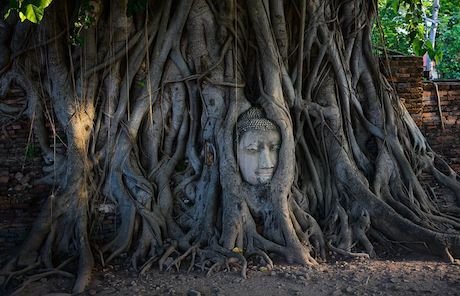
In Part 8 of this series, we looked at the schools that ‘participated’ and ‘did not participate’ in the Third Council of Buddhism, according to the Kathavatthu, the text that deals with the ‘points of controversy’ from schools other than Theravada. As was mentioned in Part 8, the Kathavatthu is classified as a canonical text in the Theravada tradition, as being part of the Abhidhamma Pitaka, although the text has been expanded up until the second century AD, as evidenced by the ‘late’ schools that are mentioned in the text. Likely, the text started out small and was expanded as more controversial viewpoints from other schools were encountered and dealt with as such.
The Kathavatthu includes a total of 217 points of controversy, divided into twenty-three chapters, where each point is associated with one or more schools, although a few are not assigned to any particular school at all. Due to a large number of doctrinal points covered, I have divided this Part 12 of the series into seven chapters, with each chapter covering one or more of the schools and their doctrinal points of ‘controversy.’
The total number of points of ‘controversy’ for each school covered in this chapter:
Uttarapathakas: 47
Overview of the chapters that cover the various schools:
- Chapter 1 — Vajjiputtakas, Sammitiyas, Sabbatthivadins
- Chapter 2 — Kassapikas, Mahasanghikas
- Chapter 3 — Andhakas
- Chapter 4 — Pubbaseliyas
- Chapter 5 — Aparaseliyas, Rajagirikas, Siddhatthikas, Gokulikas, Bhadrayanikas, Mahimsasakas
- Chapter 6 — Uttarapathakas
- Chapter 7 — Hetuvadins, Vetulyakas, Not assigned to any school, No points assigned
In this post we’ll be looking at the schools for Chapter 6 — Uttarapathakas
The given name for the schools in this post follow the Theravada name designation as mentioned in the Kathavatthu text, followed by the Sarvastivada name designation by Vasumitra in his Samaya-bhedoparacanacakra text. The Kathavatthu is divided into twenty-three chapters. Each point of controversy’s headline listed here starts out with the Kathavatthu reference of book (in Roman numerals) and point, i.e., IX. 4 means book nine, point four.
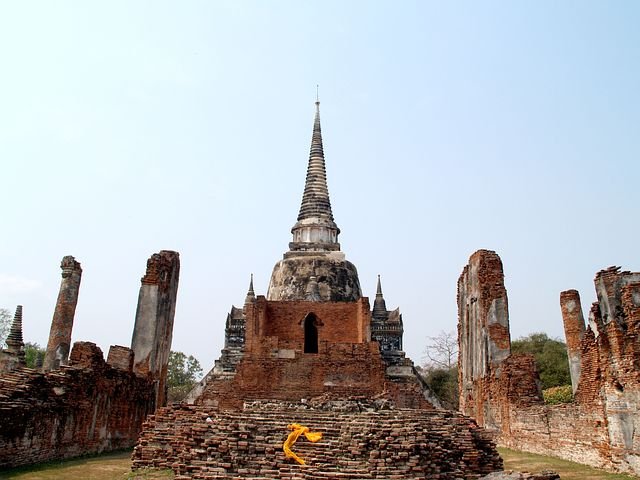
Section 1 — Uttarapathakas (47 points of controversy)
Adherents of this school are called the ‘Northerners’ in the Kathavatthu.
Point 1 — IV. 1. As to whether a Layman may be an Arahant
That a layman may be Arahant.
This concerns the belief of those who, like the Uttarapathakas, seeing that Yasa, the clansman’s son, and others attained Arahantship while living amid the circumstances of secular life, judge that a layperson might be an Arahant. Now the meaning in the Theravadin’s question refers to the spiritual ‘fetters’ by which a layman is bound. However, the opponent answers ‘yes,’ because he sees only the outward characteristics. Now a layman (gihi: house-holder) is such by the spiritual fetter, and not merely by the outward trappings, even as the Exalted One said:
Point 2 — IV. 2. Of Arahantship as conferred by Rebirth alone
That one may become Arahant at the moment of rebirth.
This question is raised to elicit the opinion of the Uttarapathakas. They namely had come to the conclusion that at the very outset of reborn consciousness, one might be an Arahant, they having either carelessly applied the Word, ‘becomes born without parentage in the higher heavens and there completes existence,’ (DN iii.132) or, converting the word ‘upahacca’ into ‘uppajja,’ and changing the meaning, ‘completed existence during the second half of the term,’ (note 1) into ‘completed existence on being reborn.’
Note 1: SN v. 201; SN i. 233. ‘Completed existence’ is parinibbayi, have become completely extinct, passed utterly away.
Point 3 — IV. 3. Of the Arahant’s Common Humanity
That all that belongs to the Arahant is devoid of intoxicants (asava).
It is an opinion of the Uttarapathakas that everything about or belonging to an Arahant, he is devoid of intoxicants (asava), is free from these.
The Asavas or cardinal vices were in the Abhidhamma reckoned as four: sensuality, rebirth (lust after), erroneous opinion, ignorance.

Point 4 — IV. 4. Of the Retaining of Distinctive Endowments
That one who realizes a fruition retains the attributes thereof after realizing a higher fruition.
There are two kinds of spiritual acquisitions, namely, acquisition at the present moment and acquisition accruing at rebirth hereafter. However, some, like the Uttarapathakas, believe that there is one other, namely, the holding of past acquirements as a permanent acquisition (note 1) in some Rupa (form) or Arupa (formless) heaven. The latter kind is retained as long as the Jhanic achievement has not spent its force. The Theravadin view is that there is no such quality, but that all personal endowments are only held, as distinct acquisitions, until they are canceled by other acquisitions.
Note 1: Pattidhammo. An Arahant is the resultant of his earlier spiritual victories, but these are transcended and canceled by subsequent attainments. Nothing is permanent. Spiritual growth is analogous to physical growth. The heterodox view is that of transference of something persisting.
Point 5 — IV. 6. Of becoming ‘the Enlightened One’ (Buddha) through Enlightenment (bodhi)
That through Enlightenment one becomes ‘The Enlightened.’
Bodhi is an equivalent for (1) insight into the Four Paths; (2) insight into all things or the omniscience of a Buddha. Also, some, like the Uttarapathakas at present, do not distinguish, but hold that, as a thing is called white by the white-colored surface, black by the black-colored surface, so a person is called ‘Buddha’ because of this or that aspect of bodhi.
Here (1) and (2) are applied indiscriminately to the same person. The Theravadin takes account of both views.
Point 6 — IV. 7. Of one gifted with the Marks
That one who is gifted with the Marks is a Bodhisat (aspiring Buddha).
This is an Uttarapathakas view. This one deals with a belief derived from a careless interpretation of the Sutta: ‘for one endowed as a Superman there are two careers.’
Point 7 — V. 2. Of the Knowledge of the Adept (asekha)
That a learner has the insight of an adept.
This is an opinion of the Uttarapathakas, namely, that learners, as Ananda and others were, showed by their confessions about the Exalted One, etc., that they knew who were adepts, and therefore understood that knowledge, the possession of which made them adepts.
Asekha: literally, non-learner, proficient, expert, one ‘beyond learning’; in this case, an Arahant. Sekha: is one who is being ‘trained,’ and still in-training.
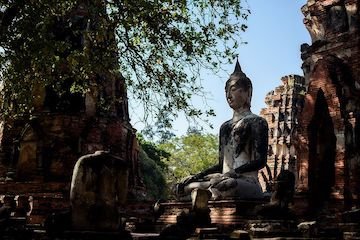
Point 8 — V. 4. Of Assurance
That one who has not made sure has the insight for entering the Path of Assurance (niyama).
Some, like the Uttarapathakas, at present hold this view on these grounds: The Exalted One judged that ‘anyone who will enter on the right Path of Assurance (sammatta-niyama) (SN iii.225; AN i.121) is capable of penetrating the Truths.’ Therefore only the average worldling who has not made sure has the religious insight requisite for entering.
‘Assurance (niyama) is a synonym of the Path’ to Arahantship. The expression ‘made sure,’ niyato, is applied to those who have entered on it, and are ‘assured of’ eventually reaching attainment.
Point 9 — VI. 5. Of the Attaining to Cessation (jhana)
That the attainment of Cessation is unconditioned.
By the attainment of Cessation is here meant the suspension of conscious procedure in Jhana. As something done, attained, it is called ‘completed,’ but it cannot be spoken of as conditioned or unconditioned since the features of one state or the other are absent. However, some, as the Andhakas and Uttarapathakas, hold that, because it is not conditioned, it is therefore unconditioned.
Point 10 — VI. 6. Of Space
That space is unconditioned.
Space is of three modes: as confined or delimited, as abstracted from the object, as empty or inane. Of these the first is conditioned; the other two are merely abstract ideas. However, some, like the Uttarapathakas and Mahimsasakas, hold that the two latter modes also, since (being mental fictions) they are not conditioned, must, therefore, be unconditioned.
Point 11 — VIII. 1. Of Divers Destinies
That there are six spheres of destiny.
There is an opinion among some schools —the Andhakas and Uttarapathakas—that the Asuras form the sixth plane of rebirth. The Theravadin contradicts this in virtue of the hair-raising illustration of the five divisions of destiny in the Sutta: ‘There are these five destinies, Sariputta.’ (MN i.73) . . . It is true that a troop of Asuras—that of Vepacitti (SN i.221)—was freed from the fourfold plane of misery, but not to form a separate plane. They were taken up among the devas. The Kalakanjakas were taken up among the Petas.
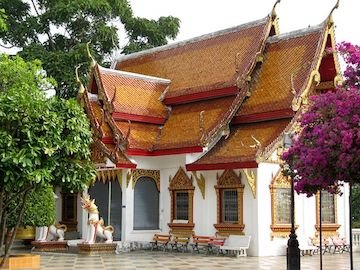
Point 12 — IX. 3. Of Matter as Subjective
Whether matter should be termed subjective or objective.
It is an opinion of some—for instance, the Uttarapathakas—that matter should be termed sarammana (i.e., co-object), not because it is so in the sense of making a mental object for itself, but since it causes mental presentation. The argument seeks to point out the distinction between the two meanings of arammana.
Sarammana: in the orthodox view, the term means ‘subjective,’ because the mind has a mental object. The opponent takes sarammana to mean ‘objective,’ because the matter is presented as object.
Point 13 — IX. 4. Of Bias as without Mental Object
That latent (immoral) bias (note 1) is without mental object.
Some—for instance, the Andhakas and certain of the Uttarapathakas—hold that what is called the (seven) potential biases, being something distinct from mind, unconditioned, indeterminate, are thereby without a concomitant mental object. The Theravadin’s questions are to show what sort of phenomenon it is that ‘has no mental object.’
Point 14 — IX. 6. Of Past Ideas
That consciousness of a past object is without object.
Some—for instance, the Uttarapathakas—hold that, since past and future mental objects are not existing, therefore mind recalling a past object is a mind without object.
Point 15 — IX. 7. Of Future Ideas
That a consciousness, having an idea that is future, is without object.
Similar to point 14.
Point 16 — IX. 8. Of Initial Application (vitakka) of Mind and its Field of Operation (note 1)
That initial mental application ‘falls’ on all consciousness.
This may happen in two ways: by way of falling on consciousness as an object, and by way of association (sampayogato), as a concomitant of the consciousness in which it operates.
In the absence of any rule (niyama) by which we can say, that such and such consciousness cannot become an object of initial application, we might say, that initial mental application falls on all consciousness. However, since some consciousness is brought to pass independently of any initial application, this does not fall on (i.e., operate in) all consciousness. Some, for instance, the Uttarapathakas fail to draw this distinction and hold that initial mental application falls indiscriminately on all consciousness.
Note 1: Vitakka is the apparent sense, or nuance, in a given state of mental activity, of a ‘directing-on-to an object.’ In Buddhist doctrine, it is an occasional or particular, not a constant, factor of consciousness.
Point 17 — XI. 6. Of Concentration
That the continuity of consciousness (Citta-santati) is a concentration of mind (samadhi). (Samadhi means the placing, establishing of consciousness exclusively and voluntarily on any single object. Ekaggata is the essential factor in consciousness, the cultivation of which may bring about the state called Samadhi.)
Some, like the Sabbatthivadins and Uttarapathakas, hold that because of the Word—to spend seven days and nights motionless, speechless, in the experience of absolute bliss’—the flow of consciousness itself may constitute the concentration. They do not take the latter term as meaning collectedness of thought, even when the coefficient of individualizing intentness (ekaggata) has arisen in a momentary unit of consciousness.

Point 18 — XII. 5. Of the Seven Rebirths’ Limit
That he who is said to be liable to seven more rebirths at most is assured of final liberation only at the end of the seven-rebirths’ interval.
This is a belief held, for instance, by the Uttarapathakas. The Theravadin’s objection is to show that there is no such immutably fixed order. There is only (1) the ‘true order’ of the Ariyan Path, and (2) the ‘false order,’ to which belong the five heinous crimes entailing inevitable retribution in the very next existence.
Point 19 — XII. 6. Sequel to the Foregoing point 18 (Of the Seven Rebirths’ Limit)
This is a sequel to the previous point 18.
Point 20 — XII. 8. Of Evil Tendency (note 1)
That for a person holding sound views evil tendencies are eliminated.
This view is due to the lack of making a proper distinction, by such as the Uttarapathakas, between an evil destiny and the natural desires concerning objects of sense felt by those who are involved in such a destiny.
Note 1: Duggati: denotes evil destiny, and connotes the sense-desires of beings involved therein. The orthodox position is, that one who holds sound views may still possess sense-desires which may involve such a destiny.
Point 21 — XIII. 2. Of a Doomed Man’s Morality
That a person doomed for a kappa may not acquire moral consciousness.
So, for instance, the Uttarapathakas, making no distinction between that lower goodness of the world of sense-desire, which such a person may alone acquire, and the sublimer, or the highest goodness, by which he would be able to avert his doom.
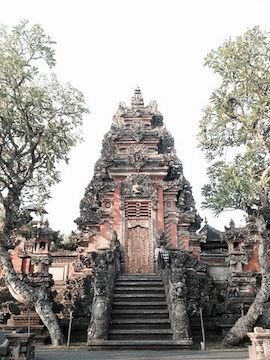
Point 22 — XIII. 3. Of Abettors of Cardinal Crimes
That a person who, as abettor, is involved in ‘immediate retribution’ may enter on the True Path of Assurance.
Such a person, who at death inherits the immediate effect of karma, may have abetted any of the cardinal crimes (matricide, etc.) in one of two ways—by a permanent or standing injunction to commit the crime, or by an occasional injunction. An abettor of the former class is already assured of his doom along the Wrong Path, because of the will to accomplish such a course having arisen. He is incapable of entering the True Path. However, the other class of abettor is not incapable, So do we conclude in our doctrine. However, some, like the Uttarapathakas, judge of the latter class as we do of the former only.
Point 23 — XIII. 5. Of One in the Toils
That a Hindrance is cast off by one who is entangled in it.
The Uttarapathakas are among those who hold that, just as there is no purifying work left for the purified, so it must be one entangled, obstructed, cloaked by the Hindrances, who abandons them.
Point 24 — XIII. 6. Of Captivity and Release
That a Fetter is cast off by one who is face-to-face with it.
This follows the above argument. To be face-to-face with it means to be up against the Fetters, to have reached the state of being possessed of them.
As this follows the argument of point 23, it is classified as belonging to the adherents of the Uttarapathakas.
Point 25 — XIII. 8. Of Lust for the Unpleasant
That there is such a thing as lusting for what is disagreeable.
In the Sutta-passage:—‘Whatsoever feeling he feels, pleasant, painful, or neutral, he delights in and commends that feeling’—the reference is too erroneous enjoyment (to be subjugated to feeling). However, some, like the Uttarapathakas, emphasizing the ‘delights in,’ hold that one can delight in painful feeling as the enjoyment of dispassionateness.

Point 26 — XIV. 3. Of Immediate Contiguity in Sense
That one sensation follows another as an unbroken fused sequence.
Because of the swift variations of seeing and hearing at performances of dancing and singing, some, like the Uttarapathakas, hold that the sense-cognitions arise in a mutually unbroken succession.
Point 27 — XIV. 4. Of the Outward Life of an Ariyan
That the Ariyan ‘forms’ (of speech and action) are derived from the four primary qualities of matter. (note 1)
The Uttarapathakas and others hold that Ariyan speech and action are material qualities derived, as such, from the four primary elements of matter, the Doctrine teaching that ‘all material qualities are the four primary qualities of matter, or are derived from them.’ (MN i.53)
Note 1: Extended, cohesive, hot, and mobile elements, popularly called earth, water, fire, air.
Point 28 — XIV. 8. Of the Unmoral and the Unrevealed (Undeclared)
That error is unmoral.
As to the term avyakata, literally ‘undeclared,’ applied to the four categories: result-in-consciousness (vipaka), inoperative consciousness (kiriya), matter and Nibbana, it means ‘can not be declared to be either moral or unmoral, because of the absence of moral (or karmic) result-in-consciousness’ (avipakatta). Applied to a speculative opinion on unprovable matters, it means undeclared (akathitatta). Now some, like the Andhakas and Uttarapathakas, making no such distinction, speak of erroneous views as unmoral in their result (itself an erroneous view).
Point 29 — XVI. 5. Of Matter as a Moral Condition (hetu)
That material qualities are moral conditions.
Condition (hetu) may signify more especially one of the moral conditions or motives and their opposites: appetite—disinterestedness, hate—love, dullness—intelligence; or, more generally, any condition or causal relation whatever. Now, the Uttarapathakas make no such distinction, but relying on their interpretation of the text—the four primary qualities (extended, cohesive, calorific, and mobile elements) are conditions (of secondary qualities)’—claim that bodily or material qualities may be moral conditions.
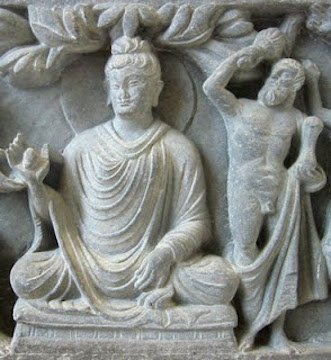
Point 30 — XVII. 11. Of the Sanctification of the Gift
That a gift is sanctified by the giver only, not by the recipient.
Some, like the Uttarapathakas, hold this view for this reason; If the recipient sanctified a gift, it would become a great blessing. Now if the donor gives and the donee produces the result, this would mean that the former causing the latter to act for him, his happiness or misery would be wrought by another. In other words, one would sow, another reap. This is heresy, an erroneous application of the doctrine of individual becoming and individual karma to two distinct contemporaneous individuals.
Point 31 — XVIII. 3. Of the Buddha and Pity
That the Exalted Buddha felt no pity.
The procedure of those who have not conquered their passions, on the occasion of misfortune, to the objects of their affection, inclines the beholder to say that compassion is only passion. Hence some, like the Uttarapathakas, judge that the passionless Buddha felt no compassion.
Point 32 — XVIII. 4. Of the Buddha and Fragrant Things
That (even) the excreta (excrement) of the Exalted Buddha excelled all other odorous things.
Out of an indiscriminate affection for the Buddha, certain of the Andhakas and Uttarapathakas hold this view.
Point 33 — XVIII. 5. Of a One and Only Path
That the fourfold fruition of the religious life is realized by one path only.
The same adherents from point 57, the Andhakas and Uttarapathakas, on the same grounds, hold that the Exalted One in becoming Stream-Winner, Once-Returner, Never-Returner, Arahant, realized all these four Fruits by one single Ariyan Path (and not in the four distinct stages each called a path).
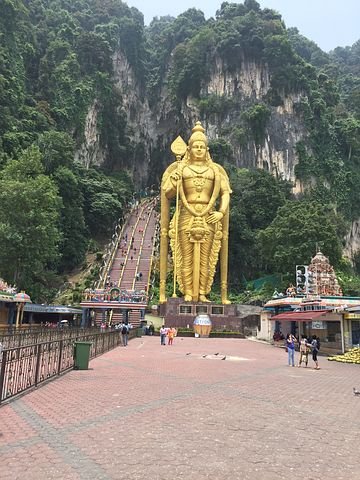
Point 34 — XIX. 1. Of Getting Rid of Corruption
That we may eradicate corruptions past, future, and present.
Inasmuch as there is such a thing as putting away corruptions, and for one in whom this is completed both past and future, as well as present, corruptions are put away, therefore some—certain of the Uttarapathakas, for instance—hold that we can now put away the corruptions of our past, etc.
Point 35 — XIX. 5. Of Thusness (tathata: suchness)
That the fundamental characteristics of all things (sabba-dhamma) are unconditioned (asankhata).
Some, like the Uttarapathakas, hold that there is an immutable something called thusness (tathata: suchness) in the very nature of all things, material or otherwise taken as a whole. Because this ‘thusness’ is not included in the particular conditioned matter, etc., itself, therefore it is unconditioned.
Point 36 — XIX. 7. Of Assurance which is not Final
That the average man may possess final assurance. (note 1)
Certain of the Uttarapathakas, judging by the Sutta—‘once immersed is so once for all,’ etc.—hold the view above stated.
Note 1: Accanta, i.e., ati + anta, very final. Another translation is ‘true,’ because all assurance for a finite period is not a true assurance. Thus our conviction that the sun will rise tomorrow, though it is exceedingly likely to be justified, is based only on a belief that no cosmic dislocation will intervene, and is, therefore, no ‘true’ assurance either.
Point 37 — XX. 1. Of Unintentional Crime
That the five cardinal crimes, even when unintentionally committed, involve retribution immediately after death.
Since the grounds for immediate retribution after death are very weighty and grave, some—for instance, the Uttarapathakas—hold that even the unintentional infliction of such injuries calls for it.
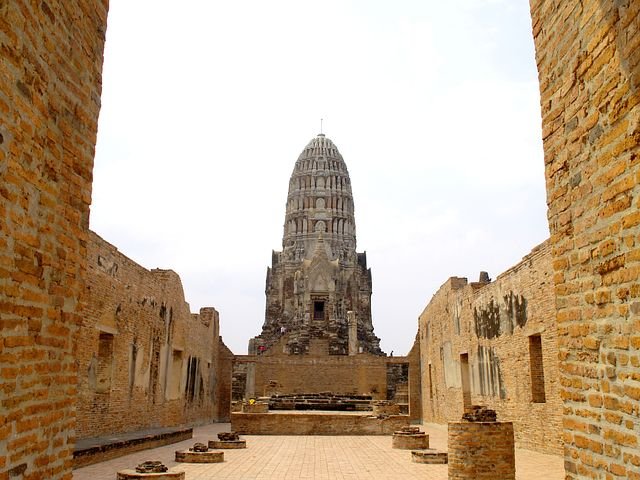
Point 38 — XXI. 1. Of our Religion
That our religion is (has been and may again be) reformed (made anew).
Because after the three Councils at which the differences in our Religion were settled, some—for instance, certain of the Uttarapathakas—hold that it has been reformed, that there was such a person as a Reformer of the Religion, and that it is possible yet to reform it.
Point 39 — XXI. 7. Of Phenomena (dhamma)
That all things are by nature immutable (niyata: not fixed).
Some, like the Andhakas and certain of the Uttarapathakas, hold this, judging from the fact that nothing (however it may change) gives up its fundamental nature, matter, e.g., being fixed as matter, and so on.
Point 40 — XXI. 8. Of Karma
That all karmas are inflexible. (note 1)
The same parties also hold this opinion, judging by the fact that karmas which work out their effects under present conditions in this or the next life, or in a posterior series of lives, are fixed with respect one to the other.
Note 1: There are two uniformities in Nature, by one of which the worst offenders are assured of immediate retribution after death, and by the other of which the Path-winner is assured of final salvation. Also, there is a third alternative group which is neither.
Point 41 — XXII. 3. Of Imperturbable (fourth jhana) Consciousness
That the Arahant completes existence in imperturbable absorption (anenje).
Certain of the Uttarapathakas hold that the Arahant, no less than a Buddha, when passing utterly away, is in a sustained Fourth Jhana of the Immaterial sphere, wherein all thinking and feeling have been superseded by the clearness of mind and indifference.
Point 42 — XXII. 4. Of Penetrating the Truth
That an embryo is capable of penetrating the truth.
Some—that is, certain of the Uttarapathakas—hold that one who in his previous birth was a Stream-winner, and remains so, must have (as a newly resultant consciousness) grasped the Truth while an embryo. The Uttarapathakas were perhaps hinting at a theory of heredity.
Point 43 — XXII. 5. Three other Arguments
The attainment of Arahantship by very young Stream-winners, notably the story of the (phenomenal) seven-year-old son of the lay-believer Suppavasa, (Udana ii.8) led the same adherents of the Uttarapathakas to believe in the ante-natal attainment of Arahantship. They, hold further, seeing the impressive feats, such as levitation, etc., that are experienced in dreams, that the dreamer may penetrate not only the Truth but also attain Arahantship.
The embryonic consciousness carrying the force of previous, culminating karma into effect. Buddhism regards consciousness, under the specific aspect of causality, as either (1) karmic—i.e., able to function causally as karma; (2) resultant (vipaka), or due to karma; (3) non-causal (kiriya), called here ‘inoperative.’ I.e., certain resultant kinds of consciousness, effects of karma in a previous birth, can never be causal again so to effect another result in any moral order in the sense in which effects may become causes in the physical order. Again, there are certain ethically neutral states of consciousness consisting in mere action of mind without entailing moral consequences. The Buddhist idea is that the normal flux of consciousness from birth to death, in each span of life, is purely resultant, save where it is interrupted by causal, or by ‘inoperative’ thought.
Point 44 — XXII. 6. Of the Unmoral
That all dream-consciousness is ethically neutral.
From the text, ‘There is volition, and that volition is negligible,’ (Vinaya iii.112) some—that is, certain of the Uttarapathakas—hold the view described above. However, this was spoken concerning ecclesiastical offenses. Although a dreamer may entertain evil thoughts of murder, etc., no injury to life or property is wrought. Hence they cannot be classed as offenses. Hence dream-thoughts are a negligible quantity, and for this reason, and not because they are ethically neutral, they may be ignored.
Point 45 — XXII. 7. Of Correlation by Repetition (asevana)
That there is no correlation by way of repetition.
Since all phenomena are momentary, nothing persisting more than an instant, nothing can be so correlated as to effect repetition; hence there never is repetition. This is also an opinion of the Uttarapathakas.
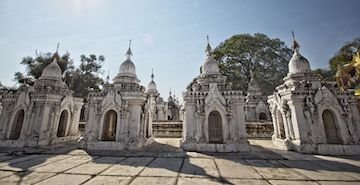
Point 46 — XXIII. 2. Of Bogus Arahants
That inferior-human beings, taking the shape of Arahants, follow sexual desires.
This belief arose in consequence of the dress and deportment of evil-minded monks and is held by some—for instance, certain of the Uttarapathakas.
Point 47 — XXIII. 5. Of the Undetermined
That the aggregates, elements, controlling powers—all save suffering, is undetermined (aparinipphanna).
Such is the opinion held by some—for instance, certain of the Uttarapathakas and the Hetuvadins. They reference the following passage:
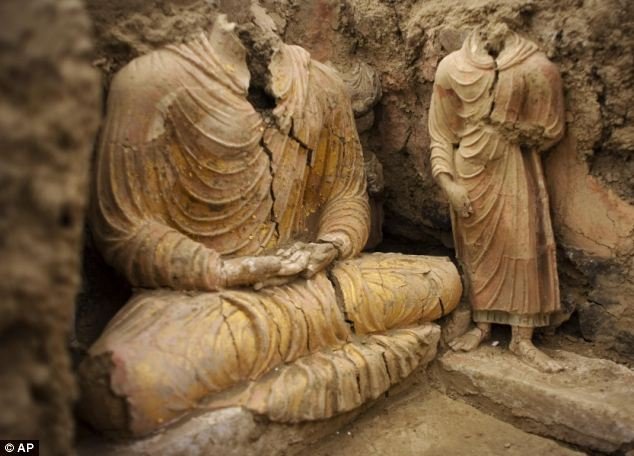
In the next article, we will discuss how the Theravada school dealt with the doctrinal points from other Buddhist schools, as recorded in their Katha-vatthu text — Chapter 7 — Hetuvadins, Vetulyakas, Not assigned to any school, No points assigned.

- Introduction to the history of Buddhist Councils and Schools-Part 1
- The Buddhist Councils — Who, when, where, and why?Part 2
- The Buddhist Councils — Who, when, where, and why?Part 3
- The History Of ‘Northern Buddhists’ of Sarvastivada - Part 4
- The History Of ‘Northern Buddhists’ of Sarvastivada - Part 5
- Buddhist schools at the time of the First ‘Maha-Kasyapa’ Council at Rajagaha. - Part 6
- Buddhist schools at the time of the First ‘Maha-Kasyapa’ Council at Rajagaha. - Part 7
- Buddhist schools at the time of the Third ‘Moggaliputta Tissa’ ‘Asoka’ Council - Part 8
- Buddhist schools at the time of the Fourth ‘Vasumitra’ ‘Kanishka’ Council at Jalandhar. - Part 9
- Buddhist schools in the 5th Century A.D. according to the Chinese pilgrim Fa-hsien - Part 10
- Buddhist schools in the 7th Century A.D. according to the Chinese pilgrim Yuan-Chuang-Part 11
- How the Theravada school dealt with doctrinal points from other schools-Part 12-The Katha-vatthu — Chapter 2
- How the Theravada school dealt with doctrinal points from other schools The Katha-vatthu — Chapter 3 — Part 12 "Continued"
- How the Theravada school dealt with doctrinal points from other schools - The Katha-vatthu — Chapter 3 — Part 12
- How the Theravada school dealt with doctrinal points from other schools - The Katha-vatthu — Chapter 4 — Part 12
- The Ten Stages of the Mahayana Bodhisattva Path-The Two Preliminary Stages-Part 1
- The Ten Stages of the Mahayana Bodhisattva Path-The Two Preliminary Stages-Part 2
- The Ten Stages of the Mahayana Bodhisattva Path-The Two Preliminary Stages-Part 3
- The Ten Stages of the Mahayana Bodhisattva Path-The Two Preliminary Stages-Part 4
- The Ten Stages of the Mahayana Bodhisattva Path-The Two Preliminary Stages-Part 5
- The Ten Stages of the Mahayana Bodhisattva Path-The Two Preliminary Stages-Part 6
- The Ten Stages of the Mahayana Bodhisattva Path-The Two Preliminary Stages-Part 7
- The Ten Stages of the Mahayana Bodhisattva Path-The Two Preliminary Stages-Part 8
- The Ten Stages of the Mahayana Bodhisattva Path-The Two Preliminary Stages-Part 9
- The Ten Stages of the Mahayana Bodhisattva Path-The Two Preliminary Stages-Part 10
- The Ten Stages of the Mahayana Bodhisattva Path-The Two Preliminary Stages-Part 11
- The Deathless In Buddhism
- The "Timeless" Teaching-Being Beyond Temporality
- The Nine Successive Cessations In buddhist Meditations - Part 1
- The Nine Successive Cessations In buddhist Meditations - Part 2
- The Nine Successive Cessations In buddhist Meditations - Part 3
- The Twelve Links Of Dependent Origination
- THINGS to DEVELOP and THINGS to AVOID
- The First Noble Truth
- The Second Noble Truth
- The Third Noble Truth
- The Fourth Noble Truth
- 10 Fold Path Series
- EATING MEAT — WHY THE BUDDHA WAS NOT A VEGETARIAN
I will flag comment spam at 1% strength. If you keep on spamming my post, I will flag you at 100%. I don't care if you have limited English abilities, write a couple of sentences about this article, no copy-paste, please. I will flag: one sentence comments, links to your blog and begging for up-votes and follows. Also, I will flag comments that have nothing to do with my blog's article. I will also check your comment section to see if you have been comment spamming on other blogs.

- Introduction to the history of Buddhist Councils and Schools-Part 1
- The Buddhist Councils — Who, when, where, and why?Part 2
- The Buddhist Councils — Who, when, where, and why?Part 3
- The History Of ‘Northern Buddhists’ of Sarvastivada - Part 4
- The History Of ‘Northern Buddhists’ of Sarvastivada - Part 5
- Buddhist schools at the time of the First ‘Maha-Kasyapa’ Council at Rajagaha. - Part 6
- Buddhist schools at the time of the First ‘Maha-Kasyapa’ Council at Rajagaha. - Part 7
- Buddhist schools at the time of the Third ‘Moggaliputta Tissa’ ‘Asoka’ Council - Part 8
- Buddhist schools at the time of the Fourth ‘Vasumitra’ ‘Kanishka’ Council at Jalandhar. - Part 9
- Buddhist schools in the 5th Century A.D. according to the Chinese pilgrim Fa-hsien - Part 10
- Buddhist schools in the 7th Century A.D. according to the Chinese pilgrim Yuan-Chuang-Part 11
- How the Theravada school dealt with doctrinal points from other schools-Part 12-The Katha-vatthu — Chapter 2
- How the Theravada school dealt with doctrinal points from other schools The Katha-vatthu — Chapter 3 — Part 12 "Continued"
- How the Theravada school dealt with doctrinal points from other schools - The Katha-vatthu — Chapter 3 — Part 12
- The Ten Stages of the Mahayana Bodhisattva Path-The Two Preliminary Stages-Part 1
- The Ten Stages of the Mahayana Bodhisattva Path-The Two Preliminary Stages-Part 2
- The Ten Stages of the Mahayana Bodhisattva Path-The Two Preliminary Stages-Part 3
- The Ten Stages of the Mahayana Bodhisattva Path-The Two Preliminary Stages-Part 4
- The Ten Stages of the Mahayana Bodhisattva Path-The Two Preliminary Stages-Part 5
- The Ten Stages of the Mahayana Bodhisattva Path-The Two Preliminary Stages-Part 6
- The Ten Stages of the Mahayana Bodhisattva Path-The Two Preliminary Stages-Part 7
- The Ten Stages of the Mahayana Bodhisattva Path-The Two Preliminary Stages-Part 8
- The Ten Stages of the Mahayana Bodhisattva Path-The Two Preliminary Stages-Part 9
- The Ten Stages of the Mahayana Bodhisattva Path-The Two Preliminary Stages-Part 10
- The Ten Stages of the Mahayana Bodhisattva Path-The Two Preliminary Stages-Part 11
- The Deathless In Buddhism
- The "Timeless" Teaching-Being Beyond Temporality
- The Nine Successive Cessations In buddhist Meditations - Part 1
- The Nine Successive Cessations In buddhist Meditations - Part 2
- The Nine Successive Cessations In buddhist Meditations - Part 3
- The Twelve Links Of Dependent Origination
- THINGS to DEVELOP and THINGS to AVOID
- The First Noble Truth
- The Second Noble Truth
- The Third Noble Truth
- The Fourth Noble Truth
- 10 Fold Path Series
- EATING MEAT — WHY THE BUDDHA WAS NOT A VEGETARIAN
I will flag comment spam at 1% strength. If you keep on spamming my post, I will flag you at 100%. I don't care if you have limited English abilities, write a couple of sentences about this article, no copy-paste, please. I will flag: one sentence comments, links to your blog and begging for up-votes and follows. Also, I will flag comments that have nothing to do with my blog's article. I will also check your comment section to see if you have been comment spamming on other blogs.
So a person can be born up to seven times and then it ends. And I take it a person who is doomed when they die they just cease to exist their Spirit has no energy them. It would be interesting. Understand the afterlife if there is one. Thanks so much and I truly enjoyed reading it. @reddust
@enjoywithtroy that is the wrong view in Buddhism, we must walk through the middle of eternalism and nihilism, it's about letting go of concepts, labels, and habits (Our personal conditioned way of seeing reality). Some questions Buddha didn't answer because it would not help us humans let go of our self caused suffering, I guess you need to become a Buddha to know some of these universal paradoxes. However, there is extensive doctrine on this subject, but I am not very good at the philosophical level of debate. I am a meditator, my husband is the philosopher, and he does not like social media. Mind and Matter (Nama-Rupa) "What is mind? No matter. What is matter? Never mind." You are #agoodegg
Venerable K. Sri Dhammananda Maha Thera, Eternalism and Nihilism - The Buddha rejected both extremes of eternalism and nihilism.Hi @reddust. I would like to make a comment about Point 14. According to the Uttarapathakas, past and future mental objects do not exist. If this statement is correct, according to the Uttarapathakas, only present mental objects exist. However, we all know that the present can be represented as an infinitesimally narrow line dividing past and future. It is so narrow, that it can be considered tending to zero (like in calculus). So if we accept all this, we could say that, according to the Uttarapathakas, the existence of mental objects tends to zero (non existence). Keep in mind that I am making a difference between tending to zero and real zero. What does the Theravada School think about this?
There is no metaphysical or tiny zero involved per Theravada view. Theravada avoids apriori metaphysics like the plague; they follow the doctrine of momentariness, which may be like a tiny zero...lolol, maybe wrong, look up how long a mind moment lasts....citta...hahaha
Most of my focus in meditation has been just letting mind moments flow and not getting involved.
Recalling the past is still a mental object happening in the present. I love your questions @marcusantoniu; you are #agoodegg!
(PDF) In Theravāda Abhidhamma sati (smṛti) is a conditioning factor that occurs only in good consciousness and is called “right mindfulness” (sammā-sati). Sati appears frequently in the depictions of religious techniques connected with four applications of mindfulness: mindfulness of the body, mindfulness of the feelings, mindfulness of the mental events and mindfulness of the factors (dhamma).
And I love your posts. I wish I had the time and energy to study them deeply. I usually get to them at the end of the day, when I am tired and ready to sleep.
Each chapter contains questions and answers by means of which the most diverse views are presented, refuted and rejected. The form of the debates gives no identification of the participants, and does not step outside the debate to state explicitly which side is right.
Not read your complete article , I choose main heading to read it ..Point number 40 on Karma is truth . Karma is most important thing , we can't escape by our karma. What we do in present or previous life , that's decides our karmafal .
Hi sir, very well written. I can see the time and effort you put into your posts. In a future post is it possible in suggesting about the bardot (Tibetan book of the dead) I like your style of writing
Buddha was great idol person in history..
He is enlightenment...
남방 불교건축 양식이네요...
행복한 삶되세요...
맛팔 부탁드립니다...^^^
Definitely it's a good concept, every chapter has questions & answers through which the most diverse scene are presented, rejected and rejected. The form of the debate makes no representation to the participant, and is correct on any point to say explicitly without taking a step outside the debate, in my opinion.
Amezing. Your work is so good. You did good job. This much explanation is so good. There are some amezing fact which I never heard before this article.
I love history. thanks for sending this Post. I like it.